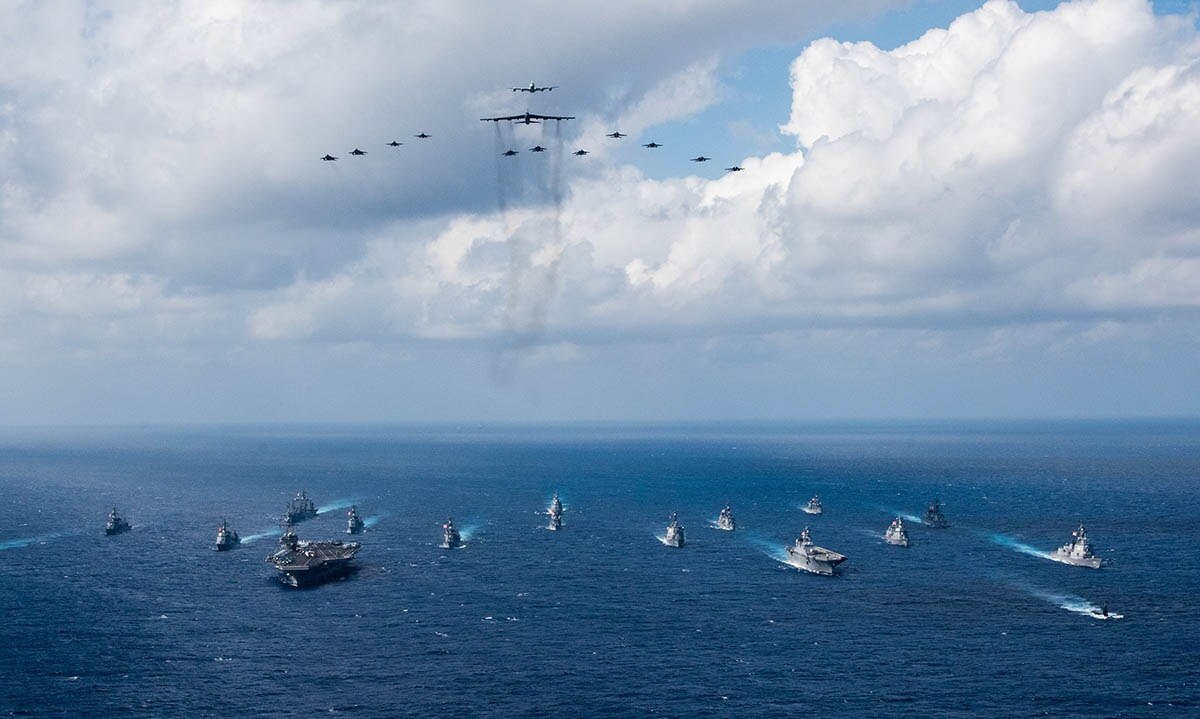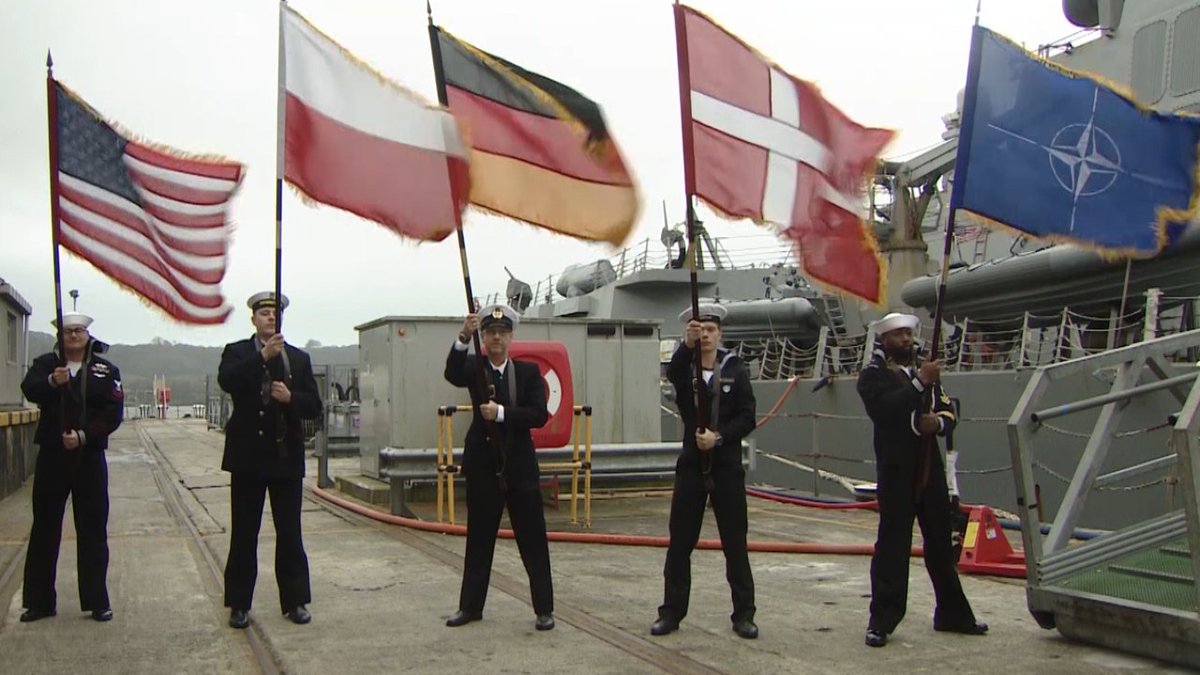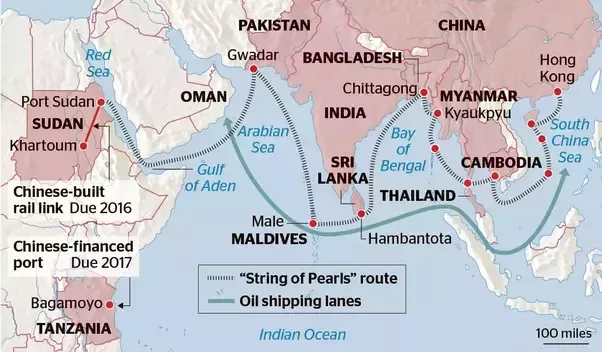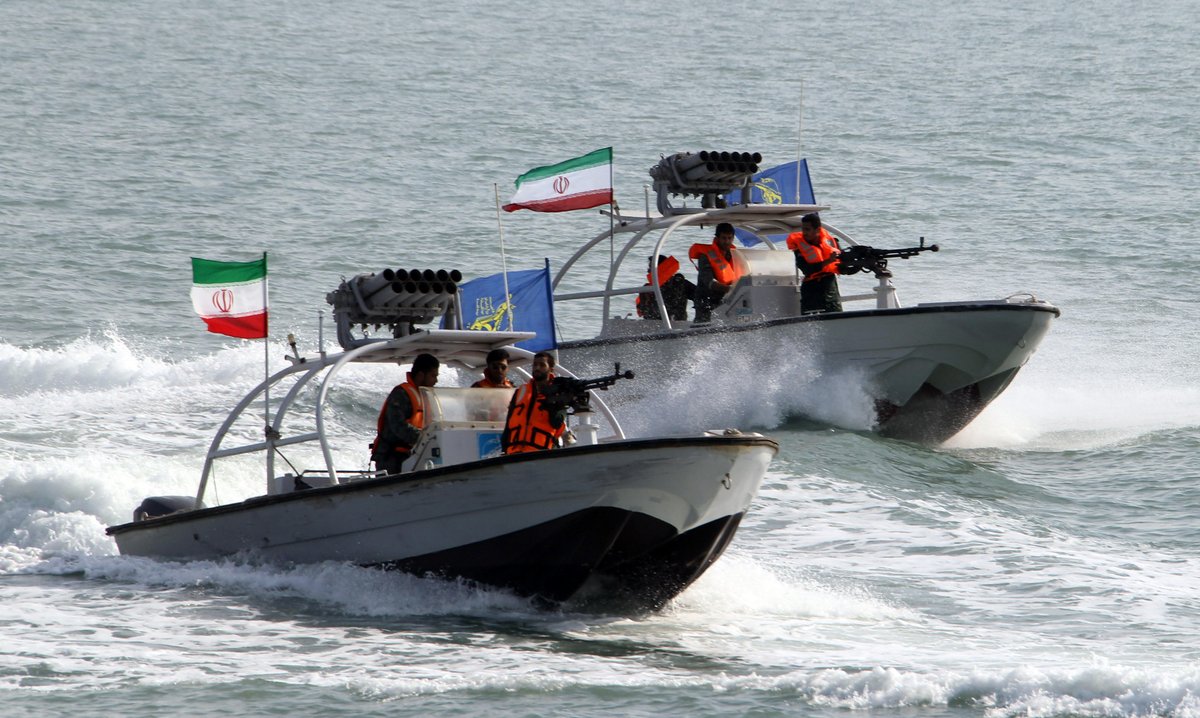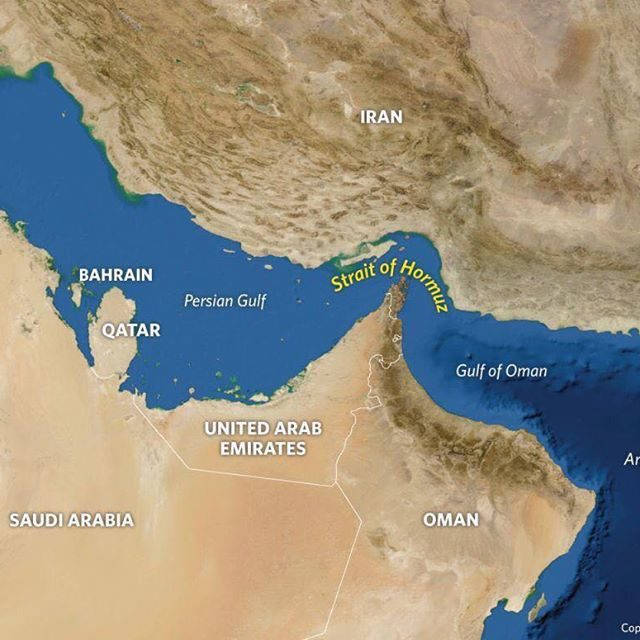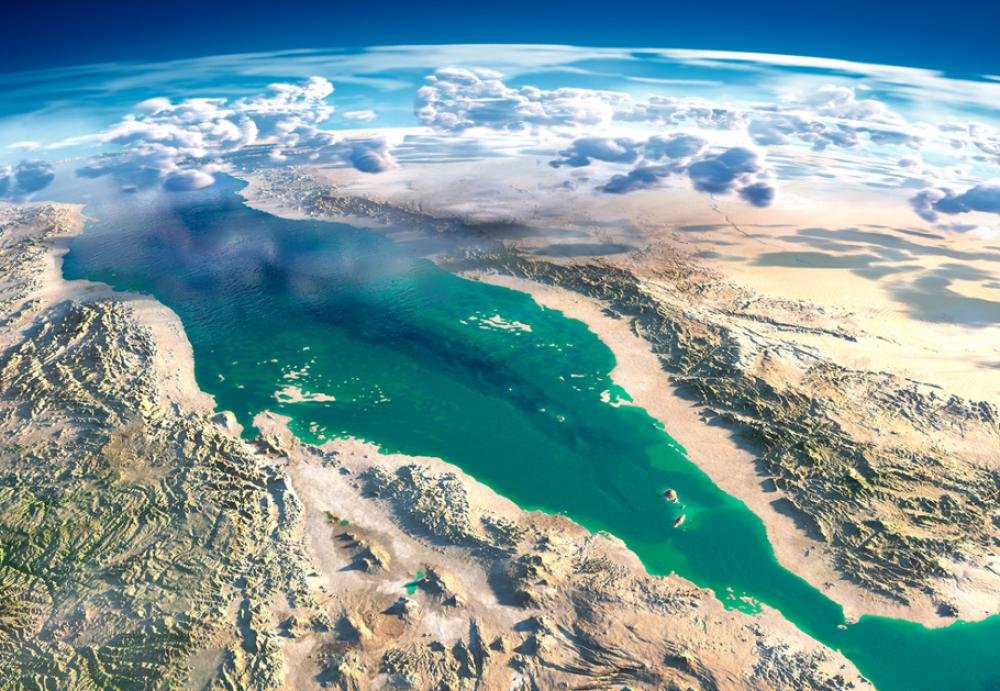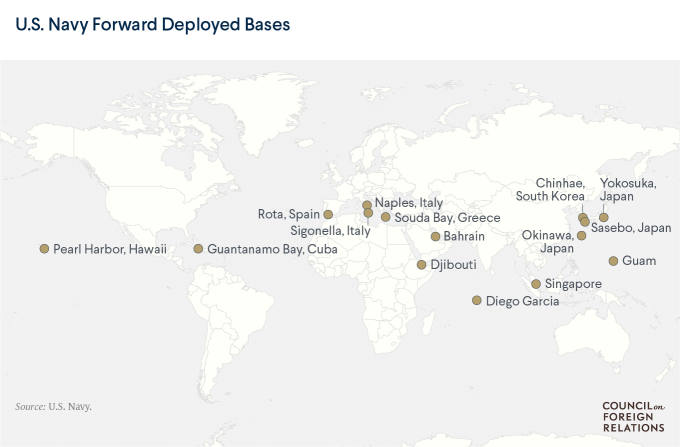𝐓𝐡𝐞 𝐂𝐨𝐥𝐨𝐫𝐬 𝐨𝐟 𝐭𝐡𝐞 𝐒𝐞𝐚
The US Navy has been one of the critical pillars upholding American influence around the world.
It& #39;s been so dominant, in fact, that America has basically controlled the global commons for 60 years.
All of that is changing.
Thread.
The US Navy has been one of the critical pillars upholding American influence around the world.
It& #39;s been so dominant, in fact, that America has basically controlled the global commons for 60 years.
All of that is changing.
Thread.
Crucial to understand is that there are three broad types of maritime military operations:
Brown Water: riverine/inland
Green Water: littoral (coastal)
Blue Water: open sea (no land anywhere)
Cost, manpower, and defense strategy dictate how nations construct their navies.
2/
Brown Water: riverine/inland
Green Water: littoral (coastal)
Blue Water: open sea (no land anywhere)
Cost, manpower, and defense strategy dictate how nations construct their navies.
2/
Blue-water navies are the most expensive, requiring capital ships, supporting vessels, long supply chains, and permanent operating bases scattered around the globe.
They must be able to project force AND defend themselves by air, on water, and underwater.
3/
They must be able to project force AND defend themselves by air, on water, and underwater.
3/
At the present time, there are nine navies who in some way boast a blue-water fleet.
The US Navy is the only one with pervasive global reach.
France and the UK have limited global reach, with others like Russia, Italy, and China being major players in their regions.
4/
The US Navy is the only one with pervasive global reach.
France and the UK have limited global reach, with others like Russia, Italy, and China being major players in their regions.
4/
For purposes of this thread, I& #39;m only considering a nation as having a blue-water navy if it fields at least one operational aircraft carrier.
Turkey currently has a carrier under construction (the 𝘈𝘯𝘢𝘥𝘰𝘭𝘶), which will greatly increase their clout regionally.
5/
Turkey currently has a carrier under construction (the 𝘈𝘯𝘢𝘥𝘰𝘭𝘶), which will greatly increase their clout regionally.
5/
The benefit of a blue-water navy is that it allows the nation to bring the fight anywhere.
A nation cannot project global force without a strong, multi-domain navy.
Most importantly, everything within the fleet has to be interoperable, with overlapping capabilities.
6/
A nation cannot project global force without a strong, multi-domain navy.
Most importantly, everything within the fleet has to be interoperable, with overlapping capabilities.
6/
An F-18 operating from a US carrier is able to perform surveillance, engage in air combat, attack enemy naval vessels, or operate over land in support of ground forces.
With roughly 40 F-18& #39;s per carrier, a single US Navy carrier strike group can dominate air, land, and sea.
7/
With roughly 40 F-18& #39;s per carrier, a single US Navy carrier strike group can dominate air, land, and sea.
7/
In addition to the carrier itself, the other vessels in a strike group offer a variety of offensive and defensive capabilities - ballistic missiles, cruise missiles, anti-submarine warfare, fleet protection, naval surface combat.
The Navy is the steel spine of US policy.
8/
The Navy is the steel spine of US policy.
8/
However, even a juggernaut like a USN carrier strike group has limits.
One challenge leads to another.
It costs a ton of money to build, operate, and sustain a fleet based around capital ships, expensive missiles, and hundreds of planes and helicopters.
Cost = compromises.
9/
One challenge leads to another.
It costs a ton of money to build, operate, and sustain a fleet based around capital ships, expensive missiles, and hundreds of planes and helicopters.
Cost = compromises.
9/
The leadership of the various branches, along with the appropriations committees in the US Congress, must play a delicate game of haggling over mission profiles, roles, and "who owns what".
Those roles determine asset investments.
And those investments determine budgets.
10/
Those roles determine asset investments.
And those investments determine budgets.
10/
Downstream from that fight is a massive network of defense contractors, sub-contractors, and whole communities whose survival often depend on the jobs provided by a single defense contract.
The bigger the ship, the bigger the budget required.
11/
The bigger the ship, the bigger the budget required.
11/
With the USN and its network of contractors having every incentive to invest into massive capital ship-based fleets, the leadership does little more than pay lip service to green-water and brown-water capabilities.
Very often, we rely on our smaller allied navies for this.
12/
Very often, we rely on our smaller allied navies for this.
12/
So while the US Navy is massive, it is not agile either bureaucratically or operationally.
Vessels and hardware just now being deployed for regular use began their development two decades ago.
The world is very different now.
The entire threat structure has changed.
13/
Vessels and hardware just now being deployed for regular use began their development two decades ago.
The world is very different now.
The entire threat structure has changed.
13/
A navy that depends on long supply chains and global network of permanent naval bases cannot easily respond to emergent threats.
New hardware like China& #39;s DF-26 missile overnight changed the operational paradigm (and thus policy).
14/ https://twitter.com/man_integrated/status/1195465368309059584">https://twitter.com/man_integ...
New hardware like China& #39;s DF-26 missile overnight changed the operational paradigm (and thus policy).
14/ https://twitter.com/man_integrated/status/1195465368309059584">https://twitter.com/man_integ...
Whereas America once had the buffer of being able to simply pull a carrier strike group close to shore and hammer an enemy, its near-peer adversaries can now (theoretically) push the fleet outside standoff range.
America& #39;s crutch is less stable than ever.
15/
America& #39;s crutch is less stable than ever.
15/
When facing a taller boxer with a longer reach, shorter boxes are taught to "get inside" - close the distance, stay quick, and neutralize the range and power of the taller fighter.
Agility, speed, pressure, and a specific type of short-range strength. Think Mike Tyson.
16/
Agility, speed, pressure, and a specific type of short-range strength. Think Mike Tyson.
16/
In naval terms, the shorter boxer is an effective green-water navy.
Small, nimble vessels can easily harrass capital ships and "slip the punch" of their standoff capabilities.
This was notoriously proven out in 2002 in the massive Millennium Challenge.
17/
Small, nimble vessels can easily harrass capital ships and "slip the punch" of their standoff capabilities.
This was notoriously proven out in 2002 in the massive Millennium Challenge.
17/
MC is one of the most controversial military exercises in American history.
USMC General Paul Van Riper led the defensive OPFOR ("Red Team").
General Van Riper overwhelmed Blue Team (attacker) with saturation missile strikes and tiny kamikaze boats in less than 10 minutes.
18/
USMC General Paul Van Riper led the defensive OPFOR ("Red Team").
General Van Riper overwhelmed Blue Team (attacker) with saturation missile strikes and tiny kamikaze boats in less than 10 minutes.
18/
It was a humiliating-enough outcome that the Pentagon kept it under wraps for years after.
More importantly, it was a painful lesson that a committed, underresourced enemy could cripple the strongest naval force in history by exploiting the US Navy& #39;s close-in weakness.
19/
More importantly, it was a painful lesson that a committed, underresourced enemy could cripple the strongest naval force in history by exploiting the US Navy& #39;s close-in weakness.
19/
Put differently, the "color of the seas" has shifted.
Blue-water force and supply chains once dominated.
The advent of new standoff weapons, more agile enemy ships, and proliferation of unmanned aerial and naval assets puts new emphasis on green- and brown-water tactics.
20/
Blue-water force and supply chains once dominated.
The advent of new standoff weapons, more agile enemy ships, and proliferation of unmanned aerial and naval assets puts new emphasis on green- and brown-water tactics.
20/
Recognizing that matching the US Navy& #39;s prowess was an impossible task, China and its allies ceded the blue-water domain completely to the US and its allies.
Rather, through savvy geopolitical maneuvers, China has simply increased the cost of approaching the coast.
21/
Rather, through savvy geopolitical maneuvers, China has simply increased the cost of approaching the coast.
21/
Mentioned previously, the "String of Pearls" port-acquisition spree under #BeltandRoad makes even more sense in this light.
It& #39;s not just about dual-use infrastructure supporting trade and the Chinese naval supply chain.
It& #39;s about controlling the littoral zones.
22/
It& #39;s not just about dual-use infrastructure supporting trade and the Chinese naval supply chain.
It& #39;s about controlling the littoral zones.
22/
A Chinese-led coalition would be a formidable enough force to threaten a US carrier strike group.
Russia& #39;s Syrian base at Tartus, and China& #39;s bases at Djibouti and Gwadar, could likely sustain significant naval operations for a long time.
https://www.thedailybeast.com/why-would-russia-chinaand-iranplan-joint-naval-exercises
23/">https://www.thedailybeast.com/why-would...
Russia& #39;s Syrian base at Tartus, and China& #39;s bases at Djibouti and Gwadar, could likely sustain significant naval operations for a long time.
https://www.thedailybeast.com/why-would-russia-chinaand-iranplan-joint-naval-exercises
23/">https://www.thedailybeast.com/why-would...
Iran, specifically, brings two assets to the table that Russian and China do not have:
- Coastal-defense submarines (Ghadir and Fateh-class)
- More than 1,500 fast attack boats armed with machine guns and anti-ship rockets
As the US Navy learned in 2002, swarms are deadly.
24/
- Coastal-defense submarines (Ghadir and Fateh-class)
- More than 1,500 fast attack boats armed with machine guns and anti-ship rockets
As the US Navy learned in 2002, swarms are deadly.
24/
The primary USN force operating in the Indian Ocean/Middle East theater is the Fifth Fleet, based at Naval Support Activity Bahrain.
A quick check of the map shows Bahrain inside the Persian Gulf.
If conflict erupted, Iran and its allies would close the Strait of Hormuz.
25/
A quick check of the map shows Bahrain inside the Persian Gulf.
If conflict erupted, Iran and its allies would close the Strait of Hormuz.
25/
Reinforcements to the theater would have to come from Diego Garcia& #39;s contingent of strategic bombers, and the Sixth Fleet& #39;s base in Italy.
The only thing in the way is the Red Sea, with the Suez Canal at the north end, and a Chinese naval base at the south.
26/
The only thing in the way is the Red Sea, with the Suez Canal at the north end, and a Chinese naval base at the south.
26/
The changing geopolitical landscape has outpaced the American defense industry.
Where America has recognized the gaps, it is moving too slowly to address the need.
China, seemingly overnight, has shifted the balance of power towards favoring large green-water fleets.
27/
Where America has recognized the gaps, it is moving too slowly to address the need.
China, seemingly overnight, has shifted the balance of power towards favoring large green-water fleets.
27/
Consider the current conflict zones of greatest concern to the US:
Black Sea
Persian Gulf
South China Sea
Eastern Med Sea
At each location, China and Russia have directly or indirectly positioned themselves to maximize the terrain to limit the US& #39; blue-water naval might.
28/
Black Sea
Persian Gulf
South China Sea
Eastern Med Sea
At each location, China and Russia have directly or indirectly positioned themselves to maximize the terrain to limit the US& #39; blue-water naval might.
28/
The Black Sea (and Ukraine) sits beyond one of the seven global maritime chokepoints (the Turkish Straits).
Access from the Med means dealing with Russian/Chinese-controlled ports in the Aegean Sea, the Russian naval base at Tartus in Syria, and the Turkish navy.
29/
Access from the Med means dealing with Russian/Chinese-controlled ports in the Aegean Sea, the Russian naval base at Tartus in Syria, and the Turkish navy.
29/
The Persian Gulf challenges were discussed in tweets 23-26.
The South China Sea situation was highlighted in the thread linked in tweet 14.
The eastern Med Sea front is of a kind with the Black Sea.
The Chinese axis has shifted geopolitics into their operational favor.
30/
The South China Sea situation was highlighted in the thread linked in tweet 14.
The eastern Med Sea front is of a kind with the Black Sea.
The Chinese axis has shifted geopolitics into their operational favor.
30/
In the modern age of #durabledisorder, it is rapidity of action and mobilization that will carry the day.
The US is built to crush peer or neer-peer adversaries in wars of attrition and firepower.
It is not built to deal with an enemy that fights from geopolitical ambush.
31/
The US is built to crush peer or neer-peer adversaries in wars of attrition and firepower.
It is not built to deal with an enemy that fights from geopolitical ambush.
31/
Consider this information in light of other Chinese ploys, such as using the UN and Belt/Road Initiative to push the US and UK out of the Indian Ocean altogether.
Consider also China& #39;s empowerment of proxies, such as North Korea and Iran.
https://twitter.com/man_integrated/status/1195959412545994752
32/">https://twitter.com/man_integ...
Consider also China& #39;s empowerment of proxies, such as North Korea and Iran.
https://twitter.com/man_integrated/status/1195959412545994752
32/">https://twitter.com/man_integ...
The colors of the sea have indeed changed.
The US trade war is designed to starve the economic engine that has fueled China& #39;s growth.
The Blue Dot Network is designed to counter Belt/Road.
But the US must begin the painful task of shifting its defense priorities, as well.
33/
The US trade war is designed to starve the economic engine that has fueled China& #39;s growth.
The Blue Dot Network is designed to counter Belt/Road.
But the US must begin the painful task of shifting its defense priorities, as well.
33/
More, smaller vessels trained in littoral and riverine combat tactics.
Better mobilization of forces using the US& #39; global network of bases.
Moving supply chains closer to key theaters.
Finally, the humility of knowing the US must prepare for the end of hegemony.
34/
Better mobilization of forces using the US& #39; global network of bases.
Moving supply chains closer to key theaters.
Finally, the humility of knowing the US must prepare for the end of hegemony.
34/
The issue of littoral combat will be explored more deeply in future threads through the lens of China& #39;s investments into "drone" submarines, the US& #39; failed Littoral Combat Ship program, and advances in anti-surface/subsurface warfare.
Stay tuned.
35/
Stay tuned.
35/
Now up, a new thread on China& #39;s ballistic missile program, the trade war, and narrative lies. https://twitter.com/man_integrated/status/1197153357347074048">https://twitter.com/man_integ...

 Read on Twitter
Read on Twitter